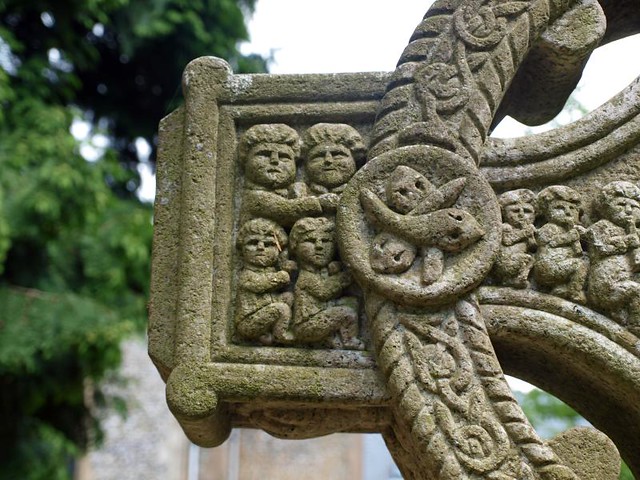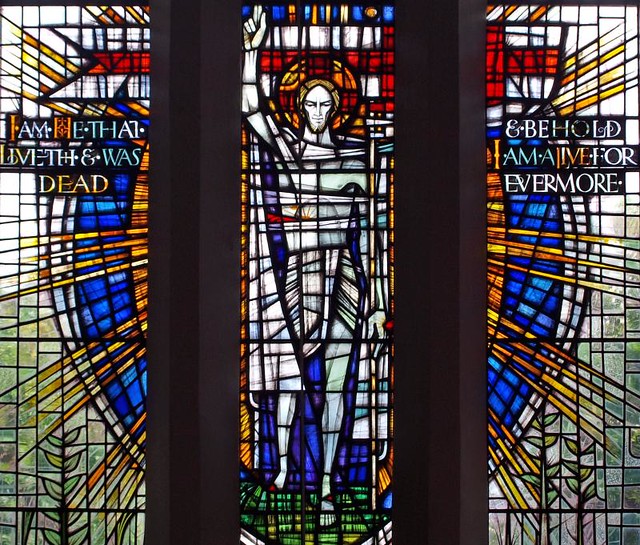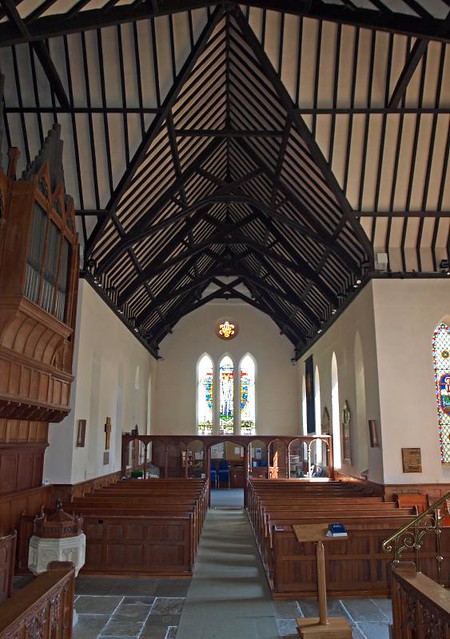Forget the exterior (but don't miss the Allen family Celtic cross with quality carving in the graveyard) and enjoy the interior.
ST PAUL, 1837, by Talbot Bury. Flint, aisleless nave, transepts and chancel; lancet windows. The only remarkable feature the timber roof forming a proper crossing with diagonal beams at the meeting of nave, transepts, and chancel.
Chipperfield. It is country pure and simple, chiefly village green, a wide and lovely stretch of Hertfordshire, with a background of wood and common, a place for cricket with a good view from the old inn, or for a stroll into woods and high bracken and sweet-smelling gorse. Among lime trees at one corner of the green stands a small church of last century, not unattractive within; on the far side a road leads in one direction past the dignified manor house (seen through fine gates), and down the hill another road leads to Pale Farm, a timbered brick building with an overhanging storey 400 years old.
Chipperfield is fresh and green and young, one of the best bits of country within easy reach of London, and we found it rejoicing in another gift from its generous Blackwell family, who had just given 113 more acres of wood and heath to the public on condition the elms in front of the manor house are not cut down. The manor house itself is 17th century with an 18th-century brick front. On the common is the Apostles’ Pond, encircled by 11 beautiful limes, which used to be 12 until Judas Iscariot was blown down. A Spanish chestnut is said to be 300 years old, with a trunk about 21 feet round.
Chipperfield is fresh and green and young, one of the best bits of country within easy reach of London, and we found it rejoicing in another gift from its generous Blackwell family, who had just given 113 more acres of wood and heath to the public on condition the elms in front of the manor house are not cut down. The manor house itself is 17th century with an 18th-century brick front. On the common is the Apostles’ Pond, encircled by 11 beautiful limes, which used to be 12 until Judas Iscariot was blown down. A Spanish chestnut is said to be 300 years old, with a trunk about 21 feet round.



No comments:
Post a Comment